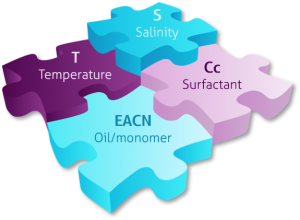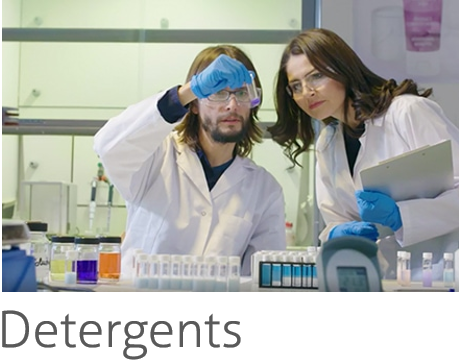Emulsions & surfactant blends via HLD
Effective development of your emulsions using predictive formulation data
- Fast, accurate and reliable HLD-NAC parameters determinations
- Sustainable and predictive formulation data for surfactants and oils
- Implementation in emulsions, dispersions and surfactant blends
- Lower energy and surfactant demand
- Improve stability and efficacy
How it works
Together with Prof. Edgar Acosta and Prof. Steven Abbott, VLCI promotes HLD for a wide range of applications.
HLD-NAC Principle
Surfactants are widely used in the Formulation Industry, and selecting the right surfactant for a specific system can be very time-consuming. The HLD-NAC (Hydrophilic Lipophilic Difference – Net Average Curvature) theory has been developed by world-known experts to make surfactant selection easier for formulators. Contrary to HLB (Hydrophilic Lipophilic Balance) theory, the HLD-NAC approach is widely applicable to both anionic and non-ionic surfactants. It allows profound predictions to be made about the type of emulsion (o/w, w/o, micro-emulsion) and the suitability and efficiency of a surfactant for defined formulations. Phenomena such as phase inversion temperature can also be understood via HLD-NAC.
The predictions are based on the HLD equation:
HLD = f(S) – k.EACN – α.ΔT + Cc + f(A)
At its heart are two numbers: the Cc (Characteristic curvature) of the surfactant and the EACN (Equivalent Alkane Carbon Number) of the oil. Surfactant behaviour is also dependent on the salinity (S), the temperature (T), the co-solvent/co-surfactant influence (A) and constants related to the surfactant (k and α).

Our Expertise
VLCI offers a practical method to determine HLD parameters via standard scan techniques, which systematically vary oil, surfactant and salt concentrations. High Throughput workflows are ideally suited to conduct these scans efficiently and reliably. Visual assessments are compiled in order to build ternary diagrams and/or fish diagrams, for combinations of oils and surfactants.
Collaborations
VLCI collaborations help companies with access to additional expertise and/or laboratory environments. ExxonMobil and VLCI collaborated on a recent project across a number of new and existing surfactant applications.
Read Also
From Triphasic Systems to Single Phase Emulsions via HLD-NAC
Efficient Approach for Bio-based Replacement of Monomers
Efficient Selection of Bio-Based Surfactants for Emulsion Polymerization
Oops! We could not locate your form.
Applications and Project Examples
- Select the most suitable surfactant (blend) to improve emulsion stability of beauty and personal care products.
- Predict and formulate thermodynamically stable micro-emulsions.
- Enhance cleaning efficiency of detergents and household products.
- Polymerize in emulsion or emulsify polymeric resins to shift towards water-based coating systems.
- Introduce bio-based surfactants to formulate sustainable systems.
- Enhance Oil Recovery (EOR) for the oil & gas industry.
VLCI offers HLD expertise combined with High Throughput capabilities to deliver fast, practical and accurate results.


